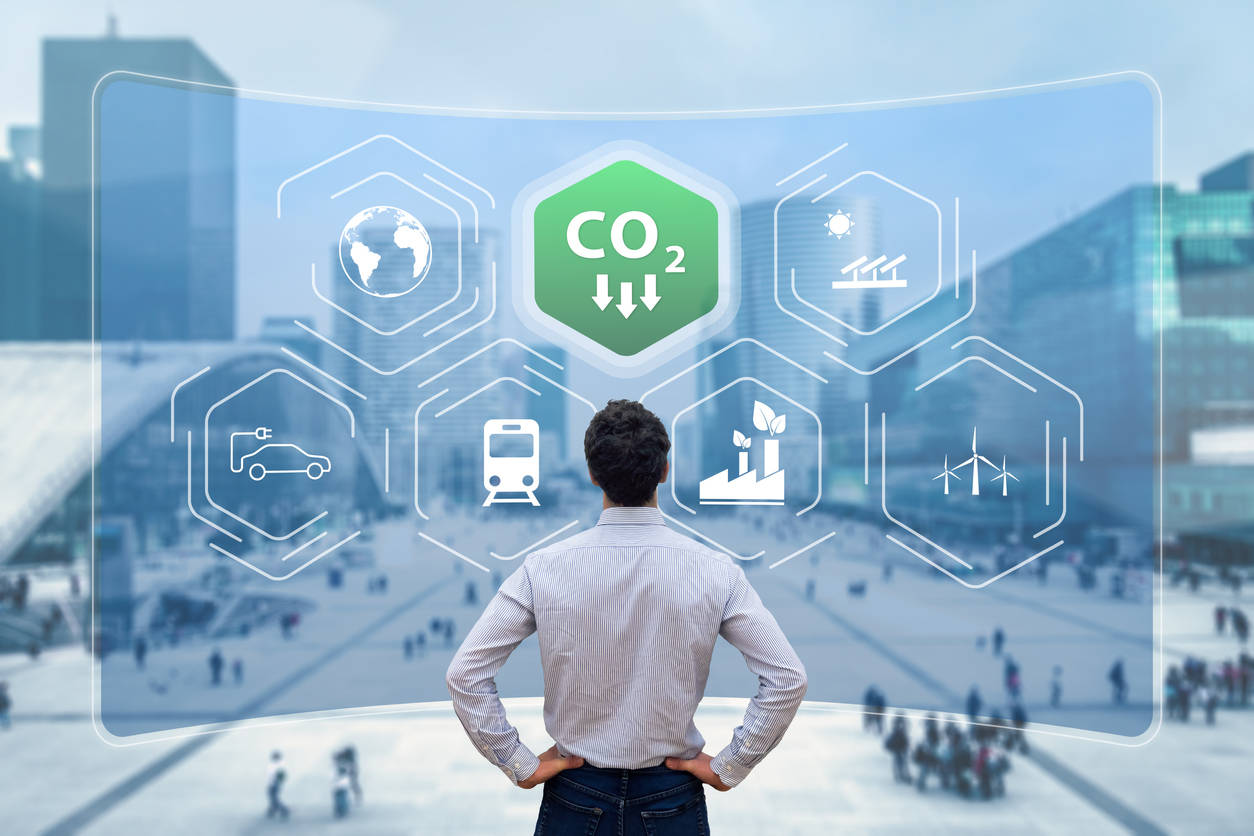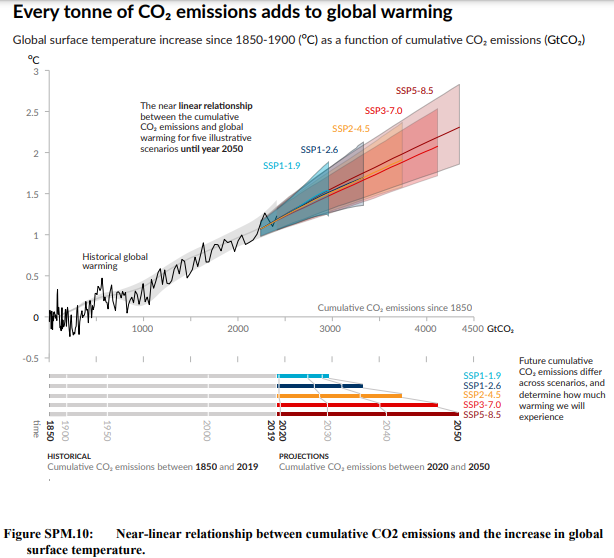
New Delhi: Ahead of the COP26 Glasgow Climate Change Summit in November when the world will take stock of the war against climate change, the sixth assessment report by the Intergovernmental Panel on Climate Change (IPCC) has come as a stark reminder of the magnitude of the battle at hand. The report says global mean temperatures are very likely to rise by 1.5 degrees by 2040 and to cap it at less than that would require a drastic reduction in greenhouse gas emissions.
The unflattering report has scientifically mapped the extent of damage to the planet due to human interference and paints a very sordid picture for the future. No matter what we do, a cool down is ruled out and temperatures will keep rising till at least mid-century. That is also the time when as per Paris Agreement, the world should become carbon neutral. But the Agreement’s primary goal of capping global warming to 2 degrees will be exceeded, says IPCC, unless deep reductions are made in carbon emissions–the main contributor to GHG emissions, over the coming decades.
“Compared to 1850–1900, the global surface temperature averaged over 2081–2100 is very likely to be higher by 1.0°C to 1.8°C under the very low GHG emissions scenario considered, by 2.1°C to 3.5°C in the intermediate scenario and by 3.3°C to 5.7°C under the very high GHG emissions scenario. The last time global surface temperature was sustained at or above 2.5°C higher than 1850–1900 was over 3 million years ago,” it says.
“In the near term (2021-2040), the 1.5°C global warming level is very likely to be exceeded under the very high GHG emissions scenario, likely to be exceeded under the intermediate and high GHG emissions scenarios, more likely than not to be exceeded under the low GHG emissions scenario and only in the very low GHG emissions scenario it is more likely than not to be reached.”
Even if the extent of warming is capped to the lower limits, it would still cause widespread destruction. Some of it is already visible in the altered seasons that are peppered with unusual rain patterns, cloudbursts and flooding, long and humid summers and short and mild winters.
“It is virtually certain that hot extremes (including heatwaves) have become more frequent and more intense across most land regions since the 1950s, while cold extremes (including cold waves) have become less frequent and less severe, with high confidence that human-induced climate change is the main driver of these changes,” the report says. “Some recent hot extremes observed over the past decade would have been extremely unlikely to occur without human influence on the climate system. Marine heatwaves have approximately doubled in frequency since the 1980s, and human influence has very likely contributed to most of them since at least 2006.”
It is something climate warriors had been saying for a long time. The sense of urgency in cutting down on emissions, which was missing till a few years ago, needs to be further intensified afresh.
“There are no “maybes” any more. The threat of climate change is real; dangers are imminent and the future is catastrophic,” said Sunita Narain, director, Centre for Science and Engineering. “It is now clear that the world may be hurtling towards 1.5°C temperature rise by 2040. Meaning, the guard rail of what is relatively safe could be breached in the next two decades itself. Given that we are already seeing huge wide-scale devastation with current temperature rise of only 1.09°C from the 1880s—industrial revolution times—we need to understand just how dire and urgent this call from science is.”
We need to move from words to action now, and in the context of India –hydrogen roadmap is one such fantastic beginning. In India, we don’t have a value for CO2Gerd Deusser, Executive Vice President and Head – Energy, Siemens Ltd
The industry at large is in agreement that more needs to be done. At a meeting organised by The Energy and Resources Institute (TERI) earlier this month to discuss the agenda for COP26, heads of companies from a cross section of sectors like chemicals, cement, automobiles, oil and energy, concurred that time was running out.
“We need to move from words to action now, and in the context of India –hydrogen roadmap is one such fantastic beginning. In India, we don’t have a value for CO2,” said Gerd Deusser, Executive Vice President and Head – Energy, Siemens Ltd. “Similarly like PAT scheme (a regulatory instrument to reduce specific energy consumption) – we need stimulus from the demand side (policy incentives) such that role of technology providers becomes imminent in the economic wide transition.”
With its aggressive push towards green mobility and solar energy, India is trying to stick to its side of the bargain but that may not be enough for the world at large and the potential is still there to do more.
“Transition to decarbonized fuels–green hydrogen, biofuels, and bio-resources would be crucial for India’s energy needs. This will be a game changer and a huge amount of capital allocation is needed for this,” said R Mukundan, Managing Director, Tata Chemicals Ltd. “By 2030 we need 2.6 trillion dollars. My own estimate broadly is that by 2040 we need more than 6.5 trillion dollars to transform this entire journey and a lot of commitment needs to come from both the public and private sector.”
“We need to think about what can be done in a collaborative way for pushing more energy transition, e-mobility, and carbon capture, utilization and storage,” said Mahendra Singhi, MD & CEO, Dalmia Cement (Bharat) Ltd.
Shell India CEO Nitin Prasad stressed the urgency and a need of timelines for decarbonization. “There is a number we need to get to for net zero and the only question is how fast do we get there,” he added.
The findings are alarming to say the least. Road transport is one major cause for air pollution for both humans and the environment leading to permanent damage.Nimish Trivedi, Co-founder & CEO, Prakriti E-Mobility
For the automobile industry, the second largest contributor to carbon emissions worldwide, it brings mixed signals. On one hand, it underlines the importance for zero emission mobility and heightens the need for the transition away from fossil fuels. But it also enhances the challenge for the incumbents.
“The findings are alarming to say the least. Road transport is one major cause for air pollution for both humans and the environment leading to permanent damage. The report has raised serious concerns and today we have to make some significant changes quickly on a large scale if our planet is to remain habitable,” sid Nimish Trivedi, Co-founder & CEO, Prakriti E-Mobility, which runs a fleet of 68 electric cabs in the Delhi NCR region.
“While the government has already embarked on the journey and set out some ambitious targets, this report shows that much more must be done, and fast. We have been working in this area for some time now and we look forward to working with the government and industry to make the necessary changes before it is too late.”
India is the third highest annual polluter of carbon dioxide in the world (fourth if EU-27 is taken as a group) but the scale of contribution is insignificant and hence, incomparable. Between 1870 and 2019, India’s share of the global CO2 budget was just 3 per cent. China emits nearly four times more while US emits double of India’s tally. Even in a business-as-usual scenario, India would still emit less than the US of today, or a third of China at 2030.
However, the report suggests India will still face some of the more adverse effects of climate change going forward. Extreme rain patterns, droughts, high heat and humidity, cloudbursts, landslides in the Himalayan region, flooding and cyclones are already becoming commonplace. These will intensify. This should prompt the government to do more than is required from a Paris agreement standpoint and vehicular emissions is one of the easier targets. It may not be good news for companies that continue to sit on the fence.
“In 2015, Toyota declared that by 2050, we will have zero carbon emissions in the vehicle manufacturing, the vehicles being sold and the lifecycle of these vehicles. Key factors to steepen the curve for electric vehicle adoption would be affordability linked to mass scale manufacturing in India,” said Vikram Gulati, Country Head & Senior Vice-President Toyota India. “To this effect, we believe in mass production and localization.”
The only silver lining that IPCC offers is that in the case of very low GHG emissions scenario, it is still more likely than not that global surface temperature would decline back to below 1.5°C toward the end of the 21st century. That will take some doing and would need drastic steps but is still in the realm of possibility.
“The “net zero” plans of countries will have to be revisited. Countries will have to work even harder to plant more trees to even sequester carbon dioxide, forget adding to the sinks to do more,” said Narain of CSE. “The science is also clear. The world needs to reduce greenhouse gas emissions by 45-50 per cent below the 2010 level by 2030 and reach net-zero by 2050. In other words, we need transformational action and not some itsy-bitsy stuff of new cars to e-vehicles by 2030, or stopping coal but then moving on to natural gas—which is also fossil fuel. We need hard and drastic action.”
Also Read:
















